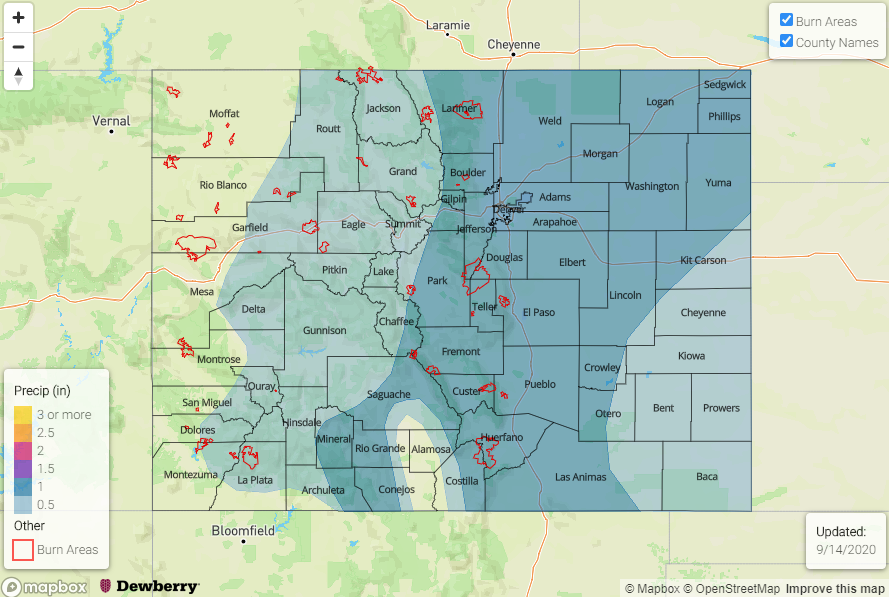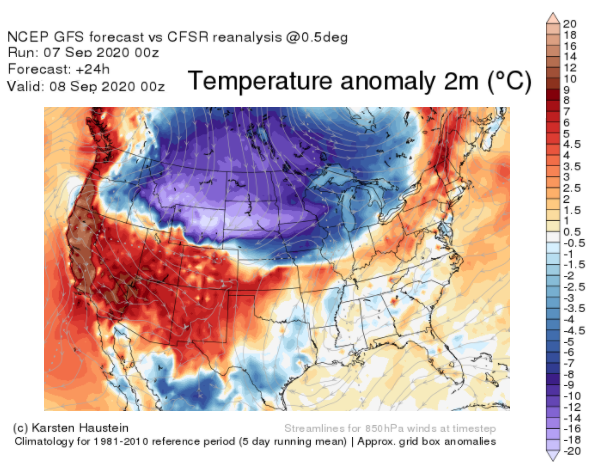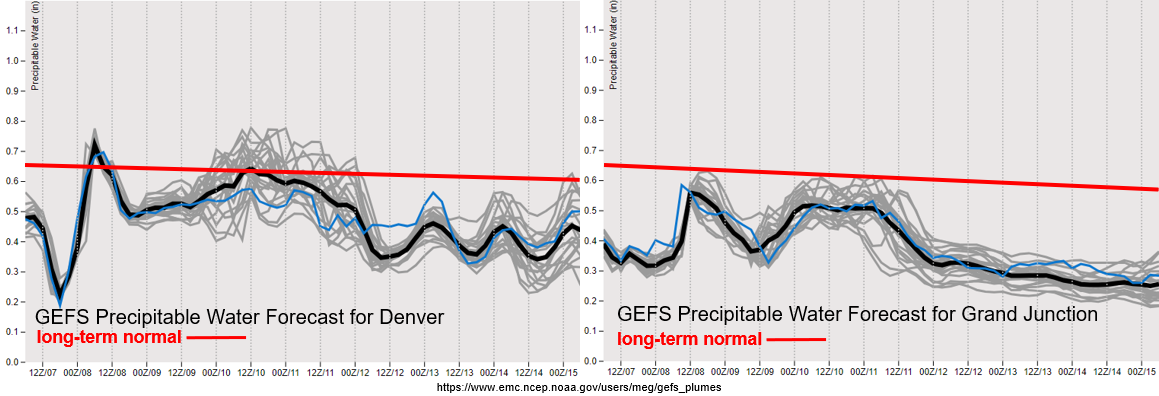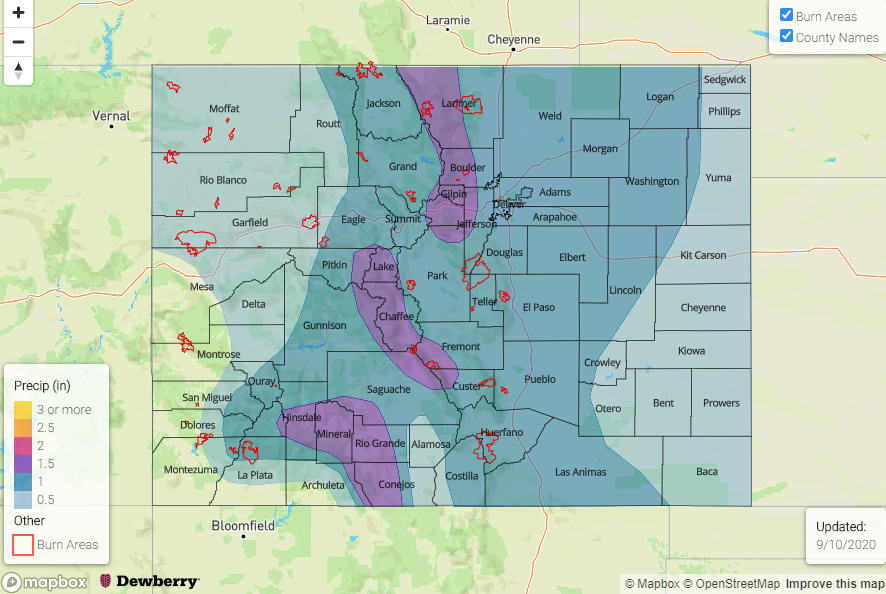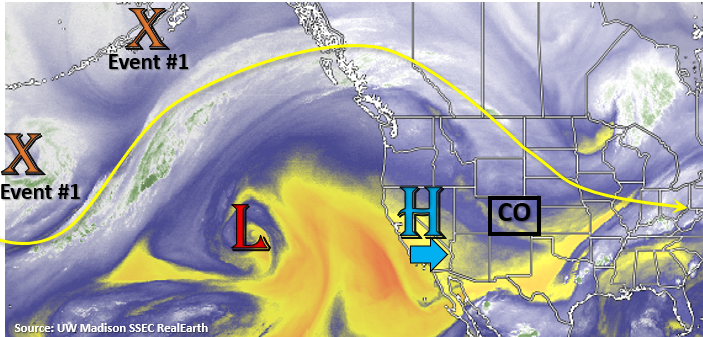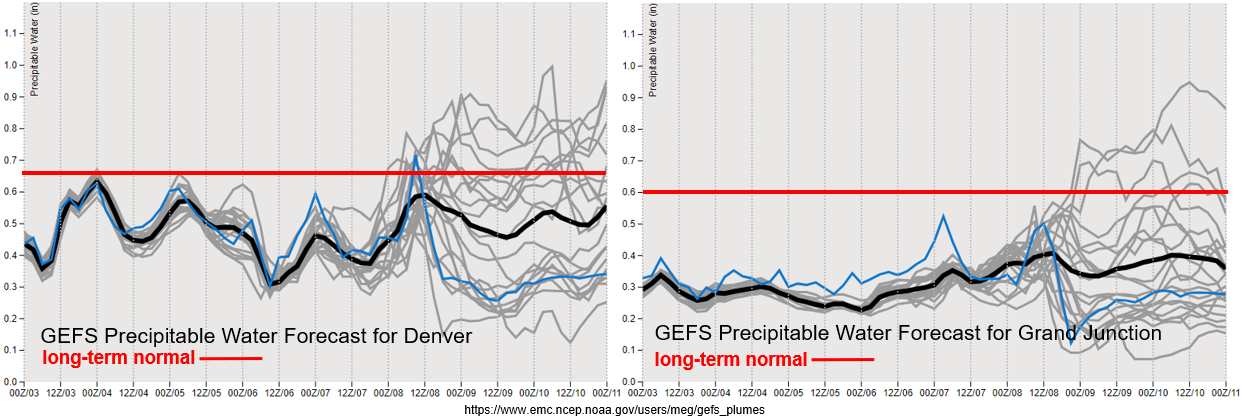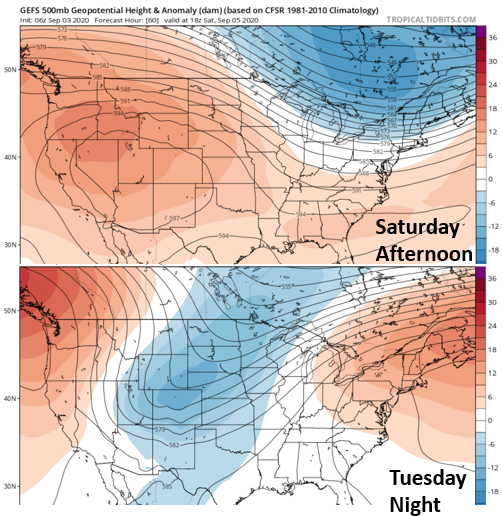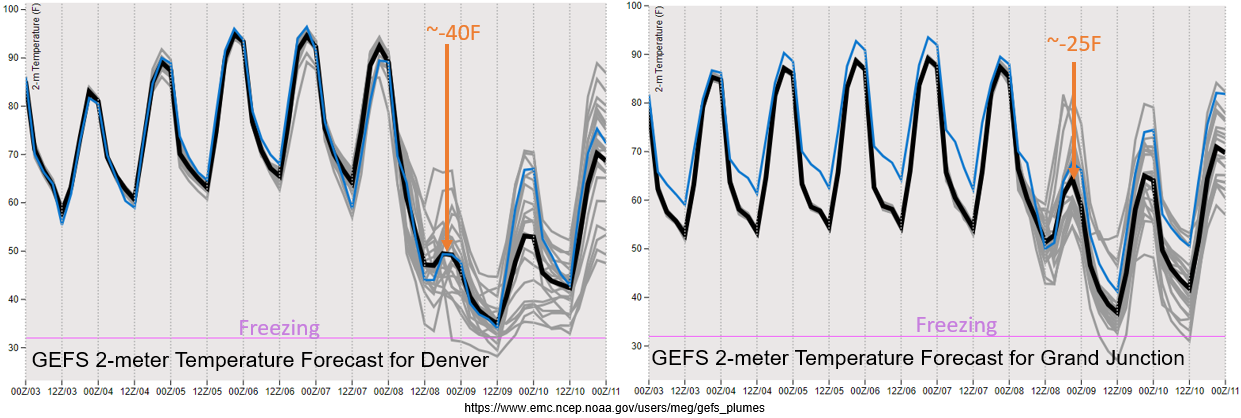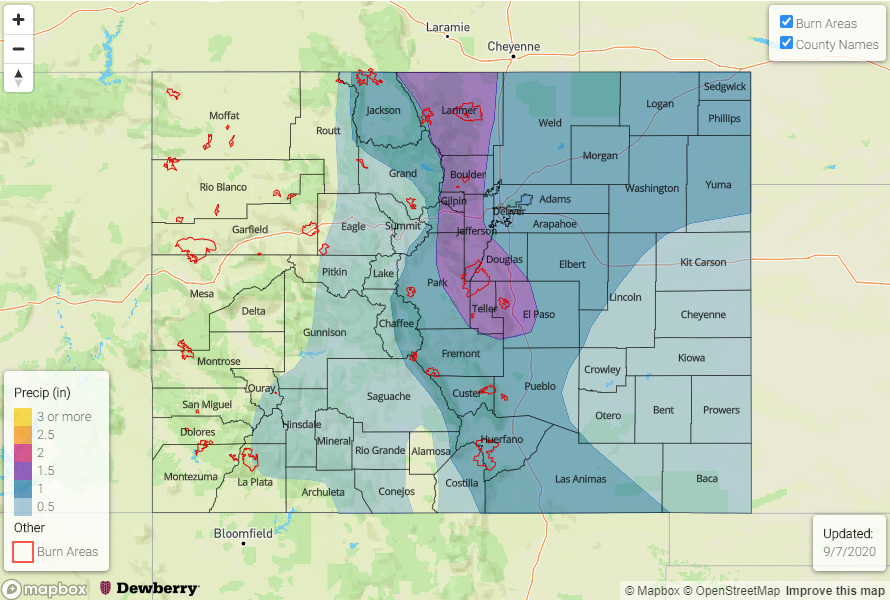Issue Date: Monday, September 14th, 2020
Issue Time: 1:50PM MDT
Valid Dates: 9/15 – 9/29

It’s setting up to be a warm, dry, and uneventful week as an elongated ridge sets up overhead. Slight movement in the High tomorrow will start to pull smoke back into the state from the wildfires across the western US. So, expect a decrease in surface visibility by early afternoon across the northern border. As the near surface smoke wraps around the High, it will be pulled south throughout the day. Event #1 will start to set up to our west over the next couple of days as an upper Low becomes cut off from the main flow and spins off the west coast. Another incoming trough will push the Low inland this weekend, which will in turn, suppress the High to our south. This will return rainfall chances and bring more seasonable temperatures to the forecast until the next ridge begins to build overhead at the end of next week.
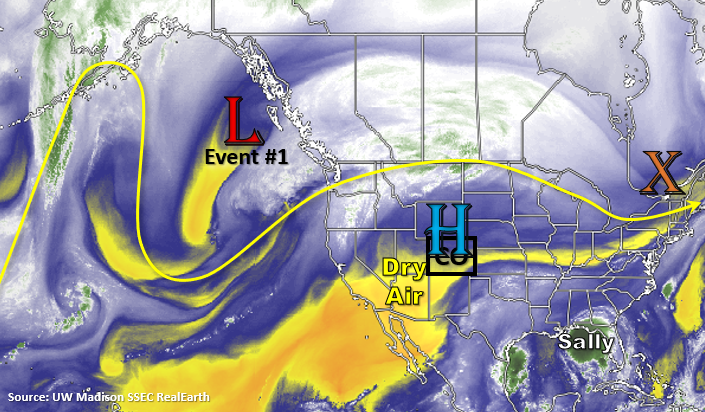
Dry air will continue to reside over the state to start the week (yellow above), so outside of some scattered, high-based light showers over the mountains, Colorado is not looking at any rainfall. This can also be seen by the well below average PW values until the incoming Low moves inland. There are still a few unknowns with the forecast for Event #1. One being how much moisture the Low will carry eastward, which is shown the spread in model members (gray lines). It may be able to interact with a northward moving tropical disturbance, and if it does, this would increase the chances of precipitation over western Colorado. If it does not, it becomes a drier forecast for the western border, so there’s a good chance for elevated fire conditions on Saturday as the system moves overhead. The other unknown is strength and timing of the disturbance. The GFS has a bit of a broader trough passing to our north and slightly faster than the GDPS and ECMWF. The GDPS and ECMWF also created a stronger amplitude trough, so we’ll have to see how the models come into agreement as the week progresses. Either way there is No Apparent Flood threat as scattered showers and storms return to the forecast for a few days.
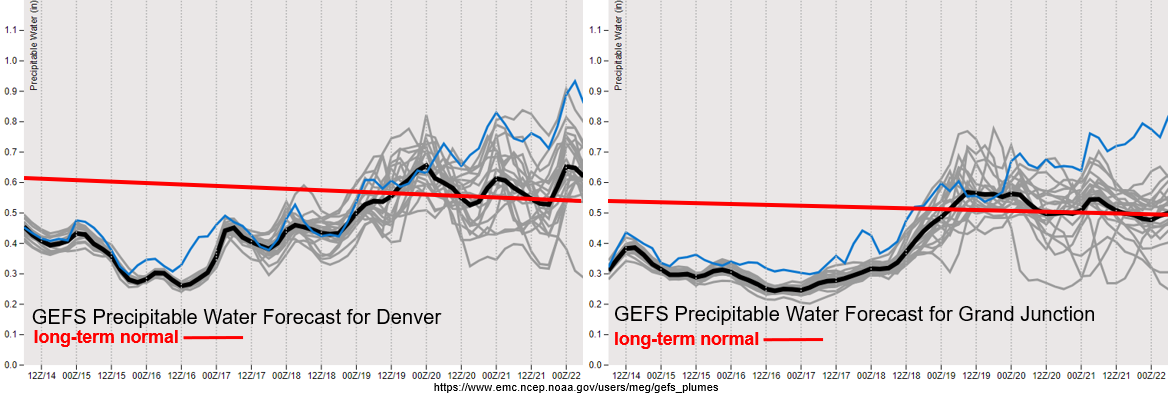
Event # Saturday – Wednesday (9/19 – 9/23)
No Apparent flood threat as a cut off Low moves inland and returns precipitation chances.
Long-term models are still in a disagreement with the finer details of this event, but it looks like cooler and wetter weather is on its way at the end of next weekend. The Low will arrive on Saturday, and as it moves east, expect a cold front to move through the state and cool temperatures down to more seasonable values for Sunday. As the front drops south, it may return light rainfall to the northern mountains. For Sunday and Monday, there’s an increase in rainfall chances over this same area, but chances also increase over the adjacent plains with a lee trough setting up. On Tuesday, a shortwave, with tropical origins, looks like it will move through the zonal flow. This will translate to more widespread showers over the mountains before the ridge builds overhead on Thursday. We’ll continue to keep watching this event as it may impact recent burn areas depending on its moisture content. Before the ridge begins to build overhead, it looks like there will be another surge of northerly flow on Wednesday associated with a system over the upper Midwest. This should keep temperatures more seasonable through the end of next week and push the remaining moisture south and east of the state. So outside of some light showers over the southern mountains with residual moisture on Wednesday, it should remain dry.





